

Even the most hands-on renovator will need to engage professionals to achieve a manageable and successful project.
Just how much assistance you require will depend on the complexity of the renovation works needed, your own level of competence and how enthusiastic you are about getting stuck in. On a heritage home, there will inevitably be some elements that simply must be undertaken by a skilled professional.
There are broadly three categories of specialist you’re likely to engage at some point during this kind of renovation project:
In this article, I’m looking in depth at who you might need to bring in for your period scheme, and how best to work with them effectively.
Heritage buildings perform differently to modern buildings. This is largely a result of the materials and techniques that were used to construct them.
It is essential to understand these characteristics before embarking on any extensive work. Failure to do so can result in very serious, long-term damage to the building.
With that in mind, your first port of call when embarking on a project should be a properly qualified expert, who understands how old buildings work. This might be a specialist consultant, capable of acting as lead advisor for the project – providing guidance and a sounding board as you find your way.
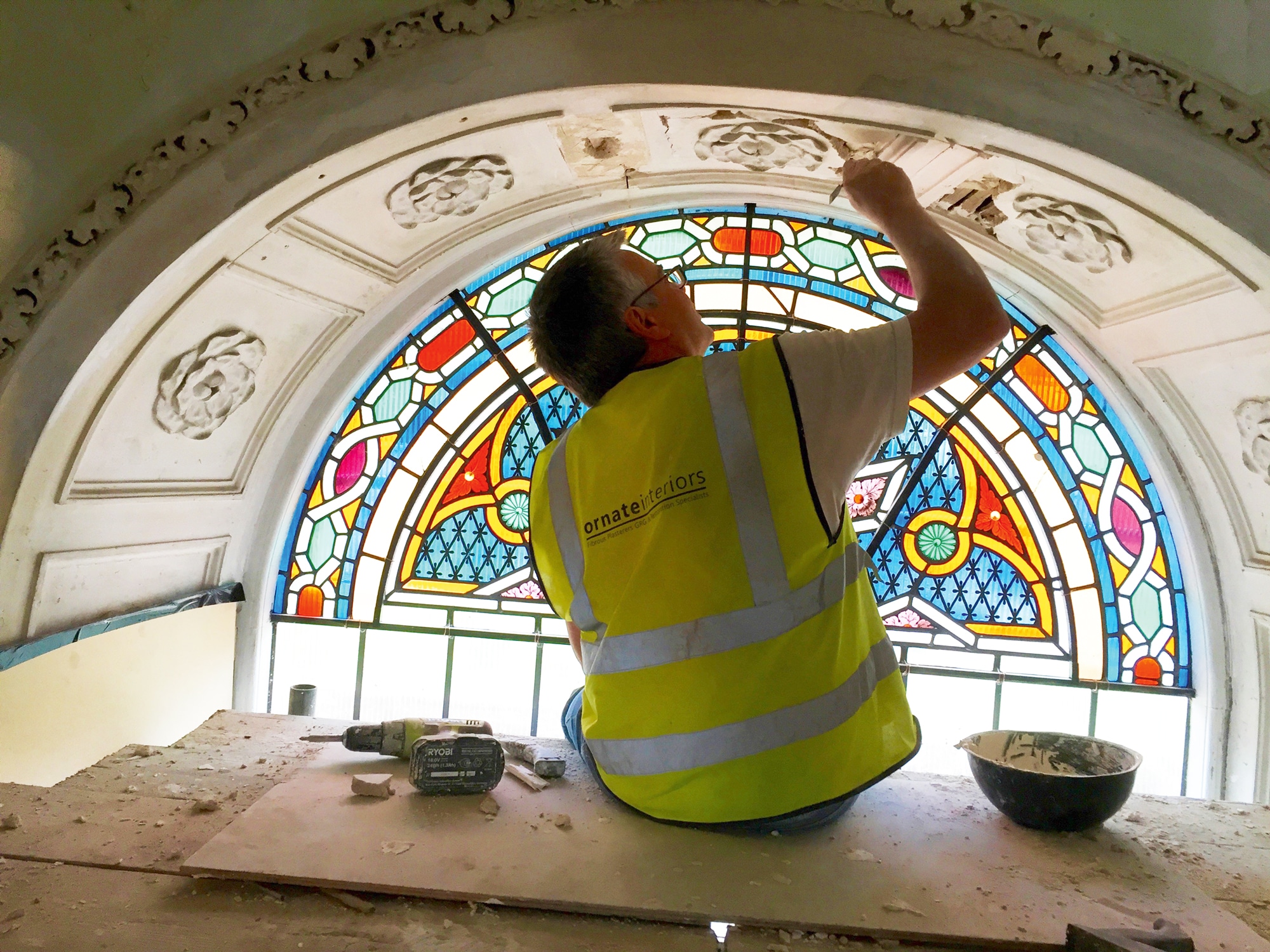
Preserving fine plasterwork is one of those jobs where you’ll definitely need a skilled craftsperson
If there is a significant design component to what you want to achieve, an accredited conservation architect who can fulfil the roles of both designer and consultant might suit you best.
Alongside, you may need to engage a range of other advisers, such as a building surveyor, quantity surveyor (who can help establish costings), structural engineer, project manager or planning consultant. Successful heritage renovations often involve multidisciplinary teams, with input from some or all of these experts.
The lead consultant will be able to assist in building your team, and will usually coordinate these parties on your behalf. Be sure you’re personally happy with each member of the team before they’re brought on board. With a major project, personal chemistry and a shared vision of what you want to achieve are just as important as expertise and experience.
You might be encouraged to engage specialist surveyors for areas such as damp or timber treatment. Often you’ll be tempted in with free assessments that could save you some of the expense of professional fees. But be wary: in reality, this type of surveyor is usually a salesperson flogging a particular solution.
As a rule of thumb, never take advice from anybody with a vested interest in signing you up to their product. Instead, put together a team of advisers with impartial guidance tailored to your building and project.
The level of skill required will vary depending on the nature and extent of the work needed – but general trades often don’t have in-depth experience of the materials and techniques used in older buildings.
With roofs, for instance, thatching is a specialist skill. A covering with stone tiles, lead or a complex arrangement of clay tiles or slates is also likely to need a dedicated heritage roofer.
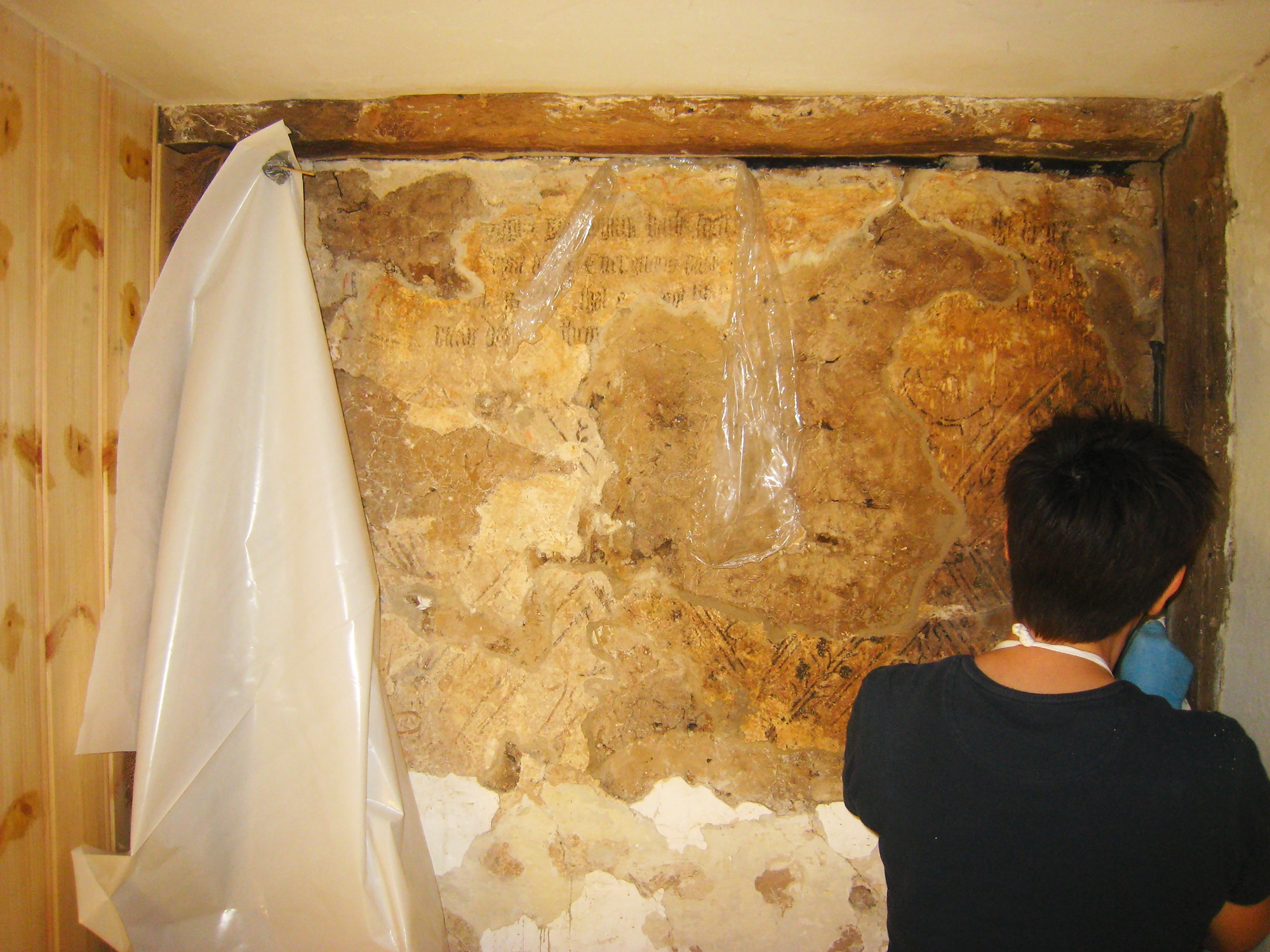
Sensitive heritage features should be protected during the works, and repairs undertaken by dedicated conservators.
On the other hand, any competent trade should be able to manage a straightforward clay tile or slate roof. Repairs to historic carpentry, timber floors, fine joinery or panelling will need someone suitably experienced with period properties – but general carpentry and joinery should not.
When it comes to brickwork, on really complicated jobs such as ornate Tudor chimney stacks you’ll want a specialist. But it’s essential that all brickwork and pointing is carried out using lime mortar, to allow the building to breathe (cement products will seal in moisture).
Many general builders are unfamiliar with lime and unable (or often unwilling) to use it, forcing you to employ a specialist. An enlightened builder, with clear specification and guidance from your consultant, should be perfectly capable.
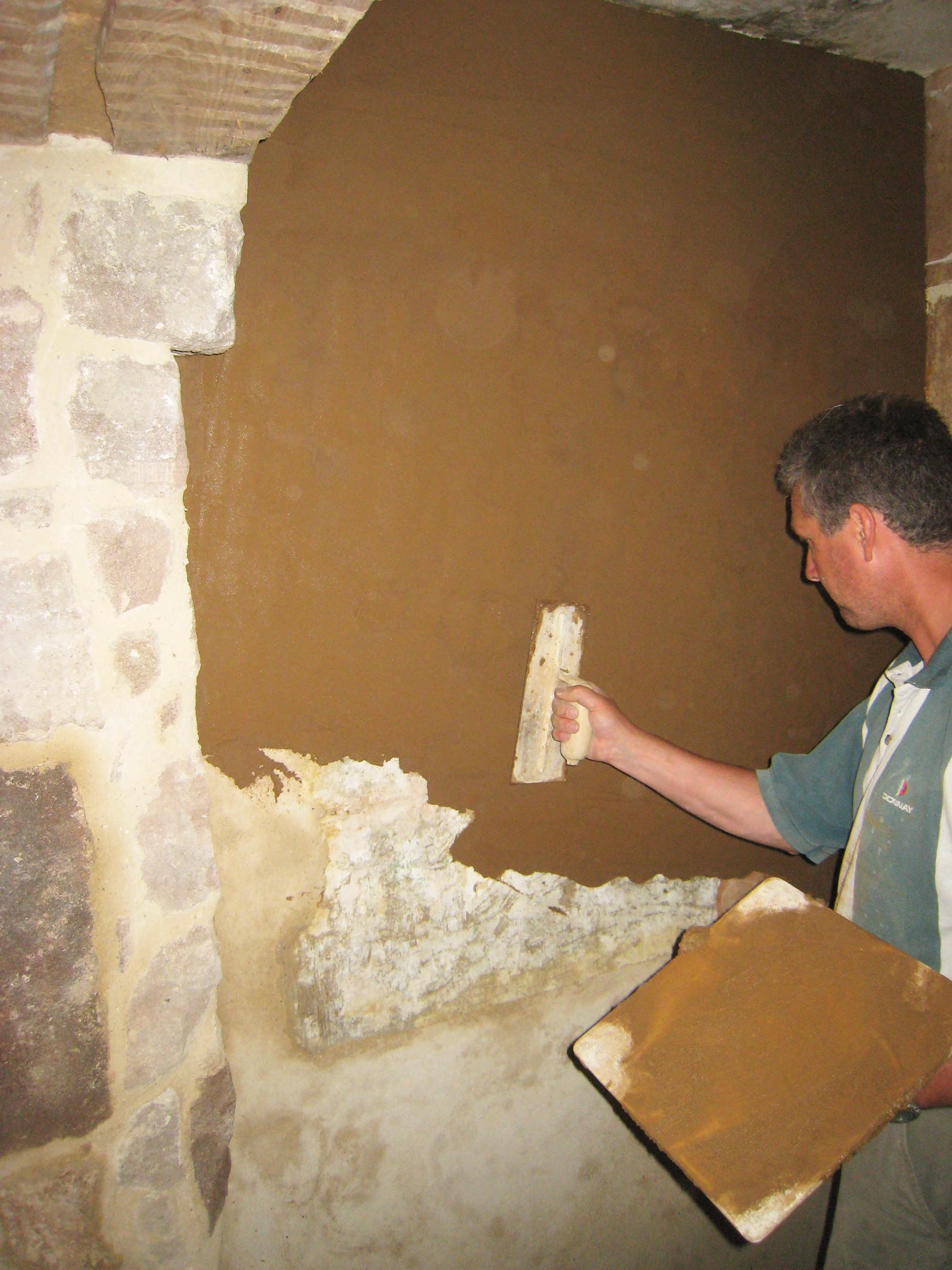
Clay plastering is quite straightforward; you can easily learn to do it yourself.
Fine plasterwork is certainly a specialist task. The majority of plaster and render on a heritage home is, however, relatively straightforward. The important thing is to use the correct materials: either lime- or clay-based products. While these involve a bit more physical effort than modern options, they are extremely forgiving – especially clay.
Any competent DIYer can learn how to use them, so this is an area where a hands-on renovator can make some significant savings.
A heritage refurbishment will occasionally involve work to important historic fabric, such as wall paintings, chimneypieces or ornate carving. These require another level of specialist conservator to properly repair and preserve. You should always be on the lookout for such treasures and be careful when stripping back, as you might uncover them during the course of the work.
This is the area where you will have the biggest decisions to make between going DIY and engaging the services of a professional.
You’ll need to strike a balance in terms of your level of competence, availability and desire to be involved set against schedule, budget, complexity and regulatory requirements. Electrical installations must be certified by an appropriately qualified electrician.
While it might be possible to carry out the work yourself and then have it certified, many sparkies are understandably reluctant to do this. Because the safety implications are so significant, it is almost always best to just hand this one over to the professionals. Their experience will also make a huge difference to deciding on the best systems, wiring routes and connections for your project.
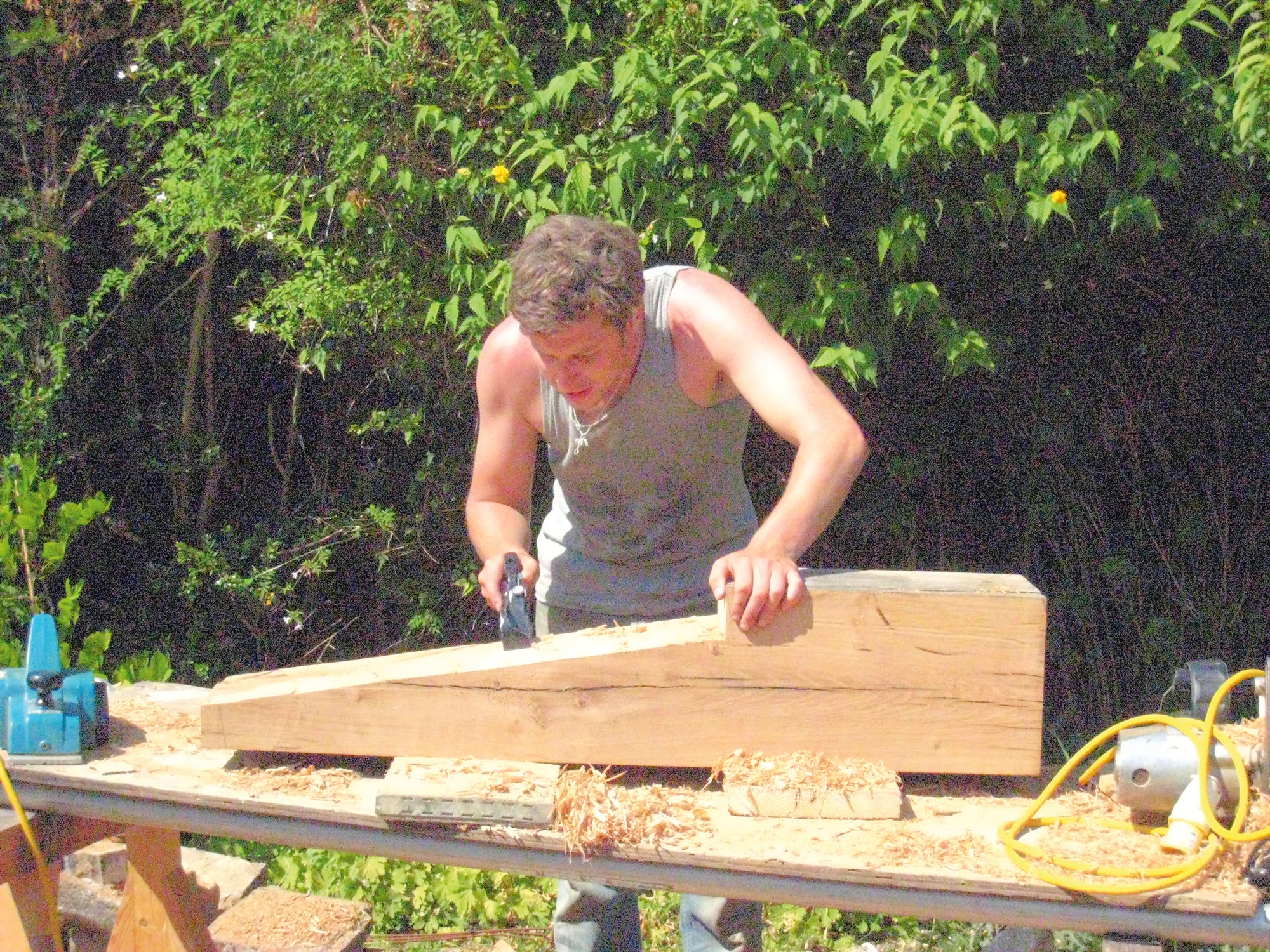
Repairs to historic structural timbers need very specific skills
Even a very competent amateur will take so much longer than a professional that the balance between loss of time and the cost saving can represent a false economy.
Heating is another job where it’s usually best to leave things to the professionals. And in some cases, such as gas installations, you’re required by law to use a properly qualified trade. You might be able to do other plumbing work yourself: running the pipes and making connections is quite straightforward. Fitting kitchens and bathrooms is also manageable for a competent DIYer.
Site carpentry, brickwork, tiling and decorating are areas where you can be involved. The extent of work will be a factor – if there is a large amount to do, the pace at which you can carry it out compared to a qualified trade can become a drag on the project and therefore less cost effective.
Having a potentially large number of professionals on site can present considerable challenges – especially if you are project managing.
The most obvious requirement is to ensure the work is always carried out according to your intention and specification. The different trades inevitably rely on each other’s work and need to coordinate and interact.
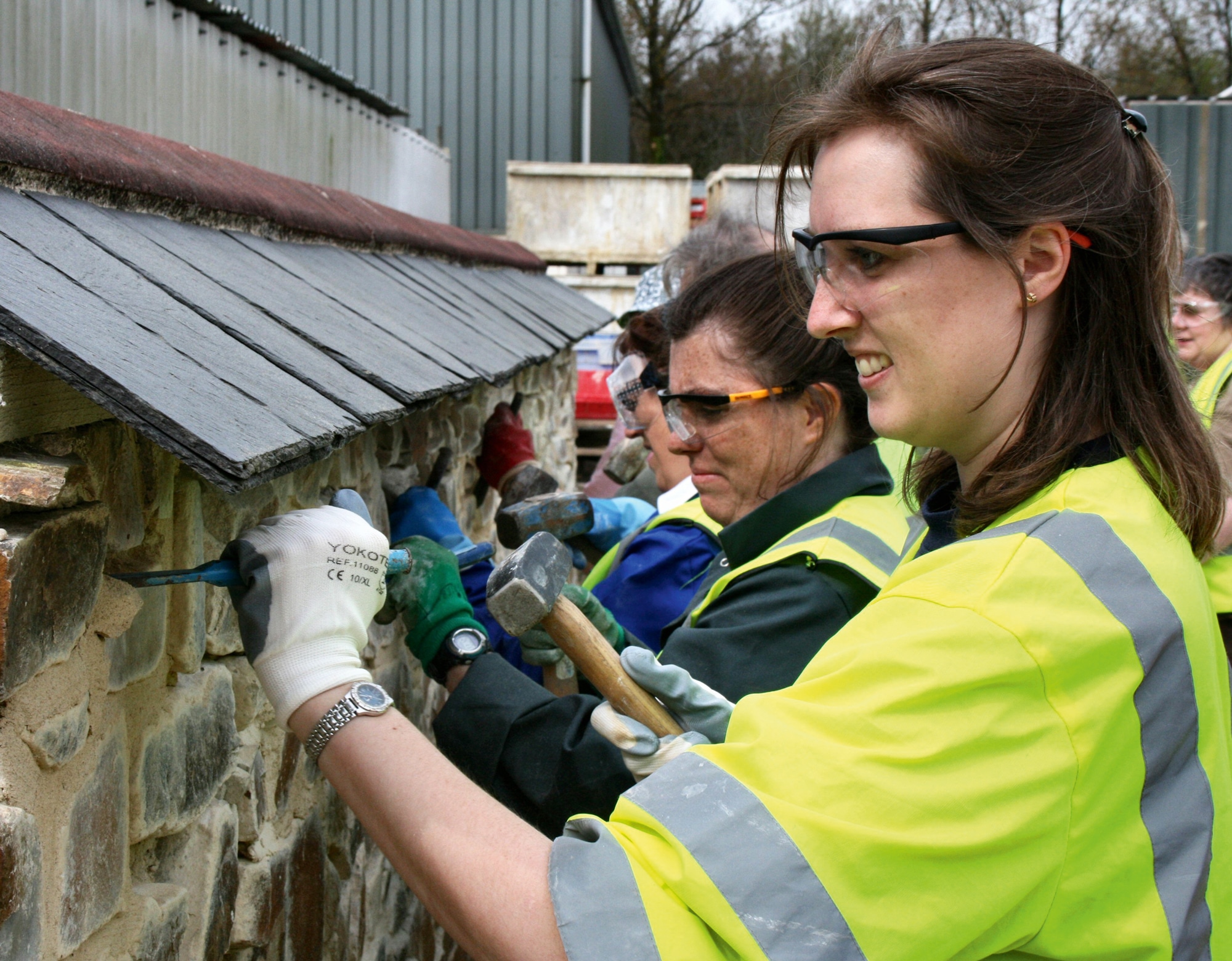
Specialist traditional and eco builder’s merchant Mike Wye offers a number of training courses for heritage homeowners who are interested in getting hands-on with their projects
Nevertheless, once they get started they tend to become very task-focused and keen to progress their own part of the job. If you’re not careful you can find one trade busily undoing or damaging the work that’s just been completed by another.
There will be an additional set of requirements related to the fact that you are renovating a heritage building. Your home is likely to have a lot of important fabric that needs to be protected from damage. This will include physical measures such as boarding and padding – don’t just rely on people being careful.
Key Points to Take Away
|
Particular attention should be given to cable and pipe runs, as you’ll need to avoid chases in sensitive fabric, notching joists or drilling historic timbers.
Fire is a particular risk when you’re renovating old buildings. Specific precautions should therefore include restrictions on hot work. Soldering pipework should be avoided if at all possible, for instance, and ruled out completely on especially sensitive houses (such as thatched properties).
It’s essential that the correct materials are properly used in your period building to avoid damaging its performance. If you have people working on site who are not familiar with them, you will have to keep your eyes open to make sure the right specifications are being followed.
For instance, it’s not uncommon to find a builder adding some cement to a lime mortar in the belief that it will somehow make it work better.

